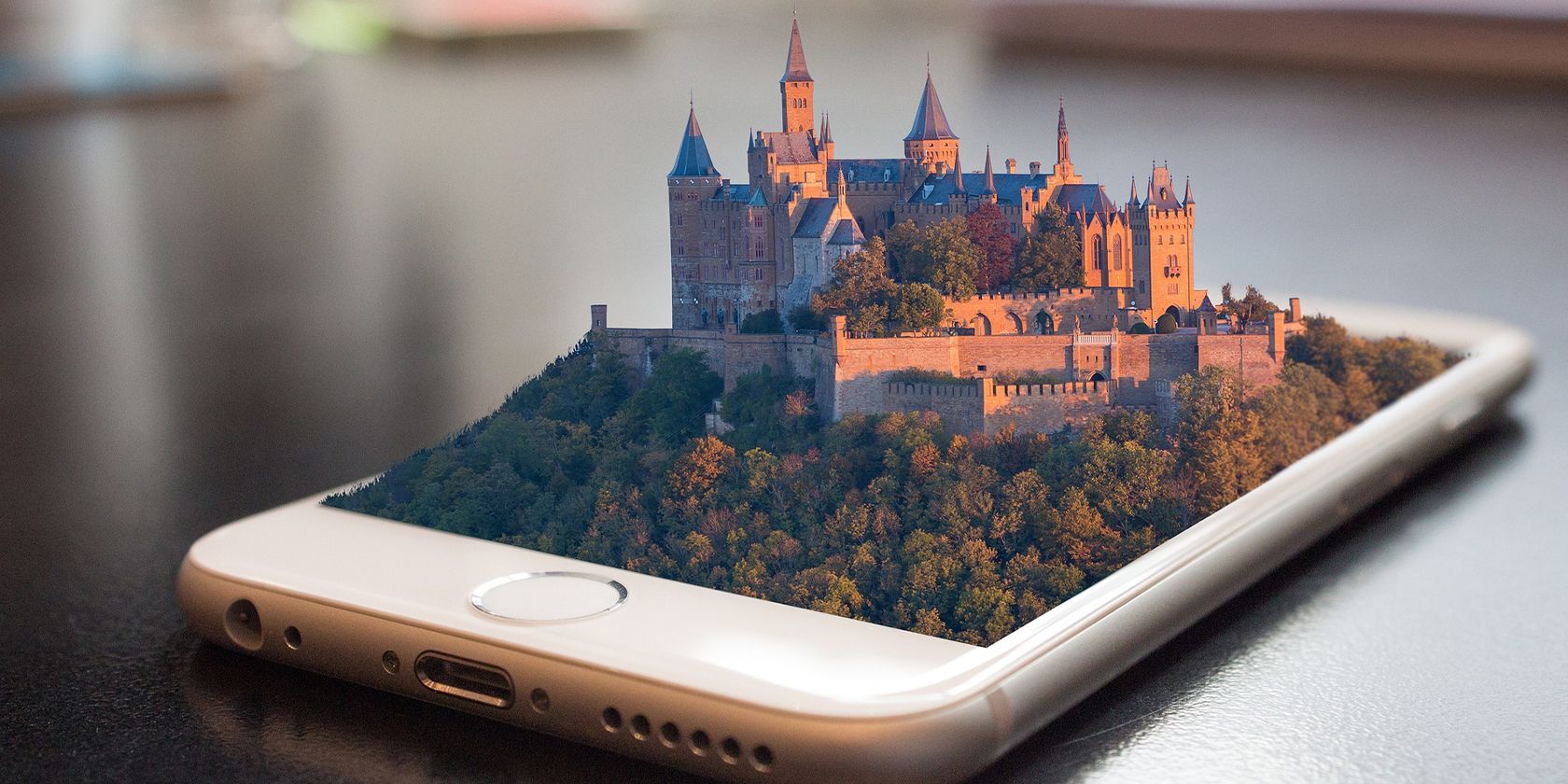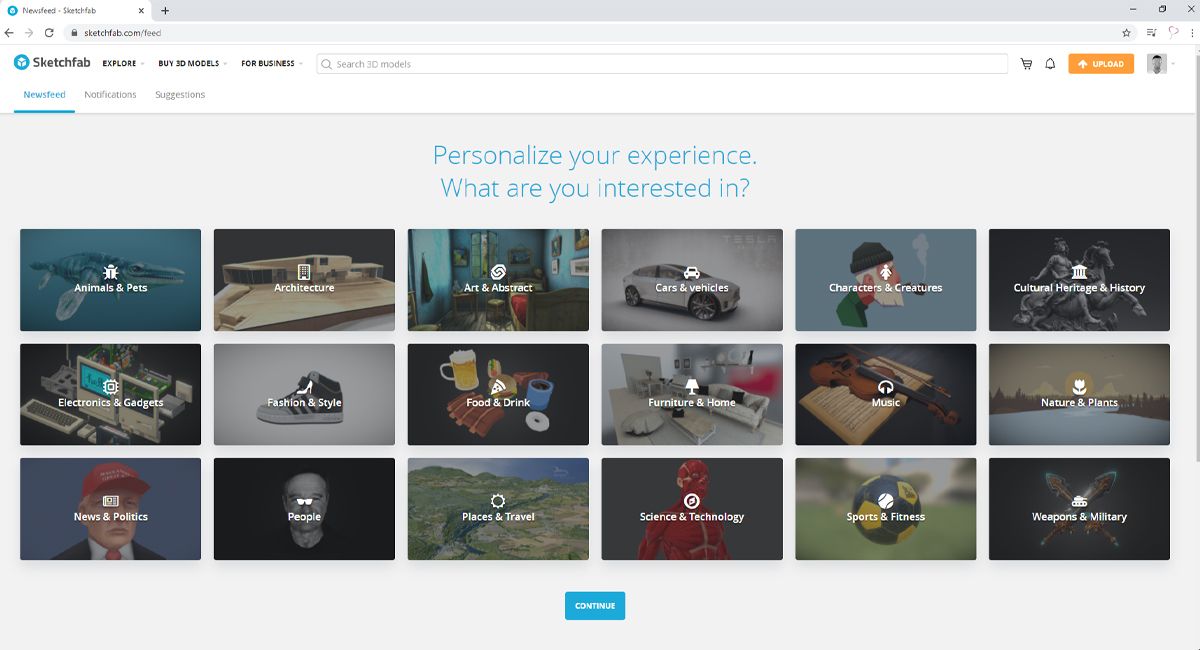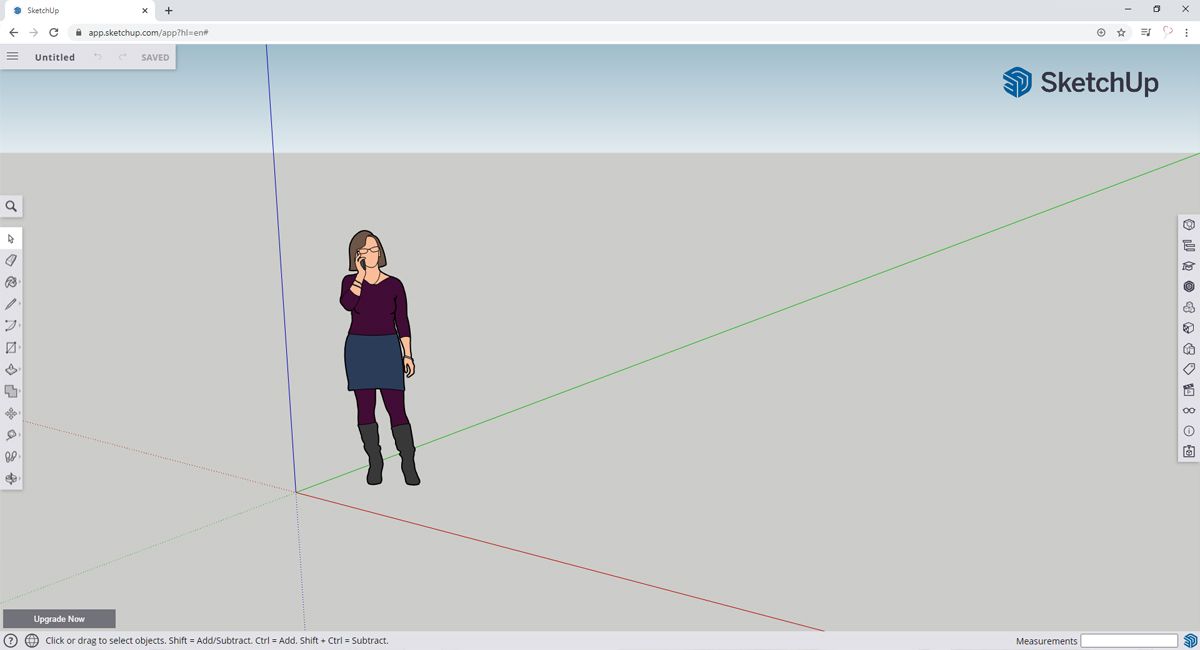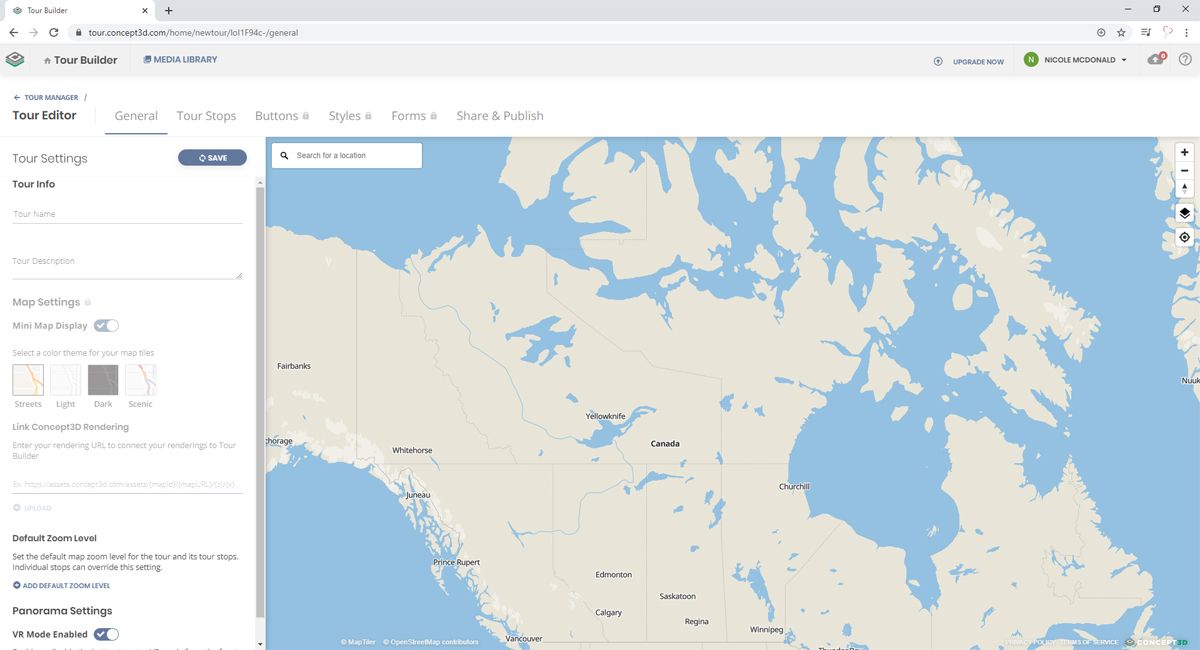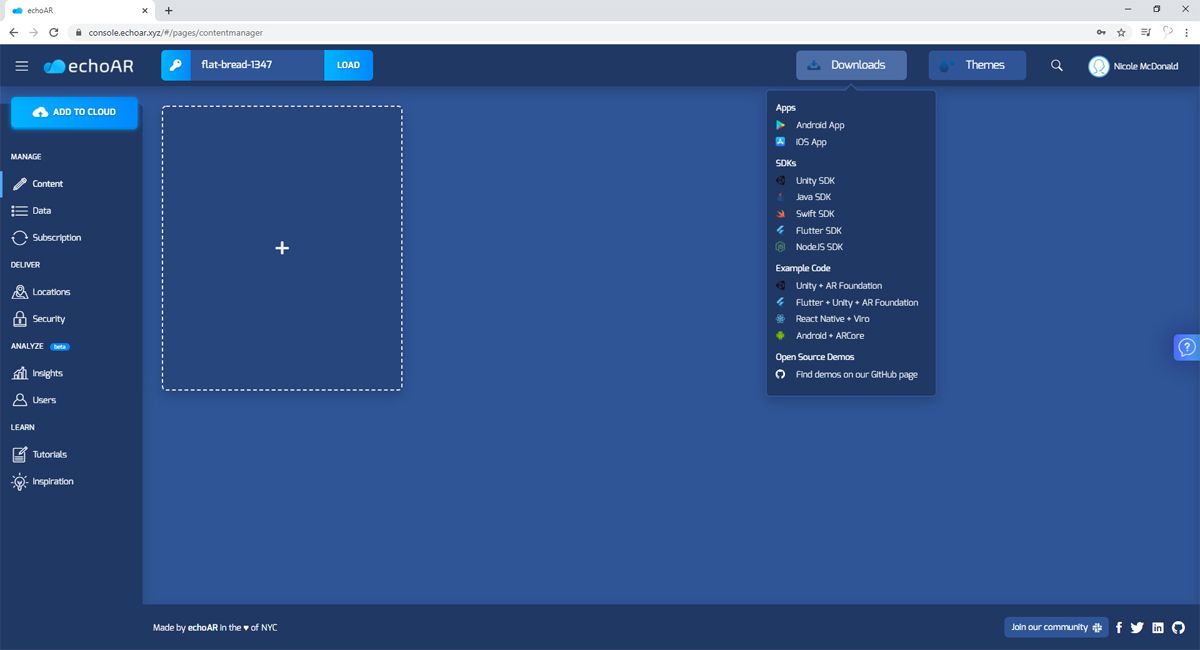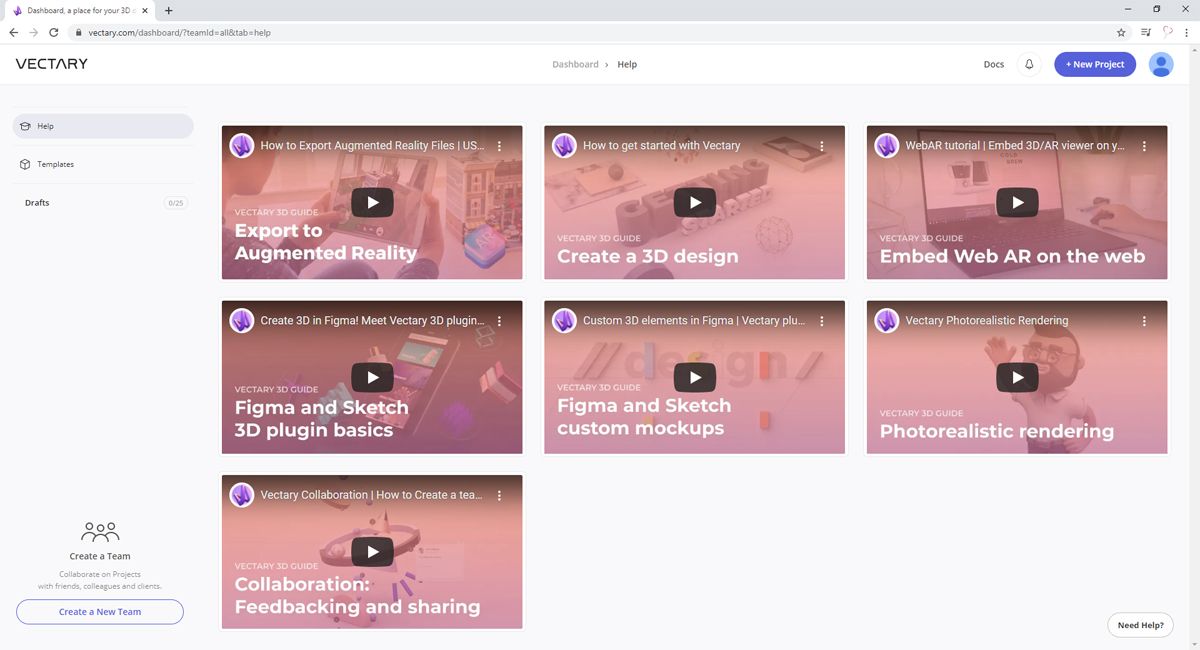Google Poly is the top choice for users wanting to share and access 3D objects. It provides free access to a library containing thousands of 3D objects for use in virtual reality and augmented reality applications that's been popular since its inception in 2017.
Unfortunately, Google announced that it will be shutting down Poly in 2021. If you are wanting to check out the world of virtual reality and augmented reality, we recommend checking out these Google Poly alternatives if you haven’t already done so.
Here are some of the best alternatives to Google Poly worth trying.
1. Sketchfab
Sketchfab claims to be the best 3D viewer on the web, allowing you to manage 3D assets, access thousands of 3D objects, distribute 3D and augmented reality experiences, collaborate with others, showcase work, and buy and sell 3D models.
3D models created with Sketchfab can be embedded and shared on websites, and social media. It offers a universal 3D virtual reality viewer that can be accessed on any browser or operating system without the need to install a plugin. With Sketchfab's built-in 3D editor, you can edit model content, adjust lighting, choose camera parameters, and add creative filters. Additionally, custom 3D configurators and download apps can be built using Sketchfab's Download API extension.
Sketchfab stands out as the closest alternative to Google Poly with its expansive library of assets and tools available for sharing. Sketchfab also offers 3D Asset Management, 3D Products in eCommerce, and 3D Advertising in their more advanced packages.
The paid versions of Sketchfab unlock additional features, but the free version is a good test to see if it meets your needs. Pricing is on a monthly subscription basis and plans vary depending on the number of views per month and selected features.
2. SketchUp
SketchUp is focused on 3D modeling software design for businesses but does include options for personal use. SketchUp allows you to create, store, and automatically convert 3D models into 2D designs.
It also allows for collaboration through virtual reality-based walkthrough videos via external tools, such as Oculus, Microsoft HoloLens, and HTC Vive.
With the built-in drawing tools, you can create draw, extrude, move, combine, isolate, and subtract complex 3D geometrical shapes. Additionally, it enables you to create 2D drawings, add annotations, define dimensions, and include comments.
SketchUp comes with an application programming interface (API), which allows for integration with several third-party solutions.
Although SketchUp isn't the closest alternative to Google Poly due to its focus on business applications, the enhanced collaboration tools and 2D conversions may still be something worth checking out.
The paid versions of SketchUp are available as annual subscriptions, which unlock additional features. However, there's a free version so give it a try.
3. Concept3D
Concept3D is a cloud-based platform with its roots in the world of mapping and a focus on business applications. It allows you to design 3D maps and virtual tour experiences.
With the built-in content management system (CMS), you can store and organize digital media files including images and videos on a centralized platform.
Concept3D highlights include collaboration, resource tracking, space planning, virtual engagement, 3D rendering, and data visualization. You can use the Mapbox engine to create and edit customizable maps by modifying the map orientation and tile colors. As well, you can view important details including room numbers, emergency exits, and accessibility routes.
The organizational and collaboration features are standouts for Concept3D and would be worth the time to check it out if you're collaborating on a large project. Concept3D comes with an application programming interface (API), allowing for integration with several other platforms. Unlike Google Poly, Concept3D doesn't have a library of assets to pull from.
The paid versions of Concept3D unlock additional features, but they do offer a free version to allow users to get a feel for the functionality of the software. Pricing is available on request only.
4. echoAR reality
echoAR is a 3D-ready cloud platform that claims to help manage and deliver virtual reality and augmented reality content to apps and devices everywhere.
This cloud-based platform allows you to quickly build and deploy augmented reality or virtual reality apps and experiences. With a 3D-first content management system and delivery network coupled with a scalable BaaS infrastructure you are enabled to build virtual reality or augmented reality app backends in minutes and easily manage and publish 3D content.
echoAR is specially built to handle, convert, and compress 3D models, interactive content, and animations while providing interaction analytics and usage metrics. The cross-platform system supports any augmented reality client-side SDK for developers to choose to build their apps, such as ARCore, ARKit, Vuforia, Wikitude, WebXR, Unity-based SDKs, and MagicLeap.
Although you can easily upload, manage, and publish content to the augmented reality app, the highlight of the platform is not needing to involve development teams to complete a project. Unlike Google Poly, echoAR doesn't have a library of 3D assets to take advantage of.
The paid versions of echoAR require a monthly subscription and unlock additional features, with a free version for personal projects and experiences.
5. Vectary
Vectary claims to be the most accessible 3D and Augmented Reality design platform with no downloads, all in the browser. It allows you to build immersive experiences, publish 3D, and augmented reality content to any website, on all platforms with Vectary Web AR and a fully-featured 3D design tool.
Vectary includes a library of millions of assets for free, photorealistic rendering, and a web augmented reality viewer allowing you to preview your design instantly in augmented reality or embed your 3D model on the website as easily as a YouTube video. It also includes an import and convert function allowing for more than 60 3D file-formats, including CAD files, to be exported to augmented reality ready files in seconds.
Vectary stands out with an interface that allows anyone who wants to get into 3D design to produce professional-looking results quickly.
Vectary is available on a monthly subscription, with paid versions of Vectary unlocking additional features. They offer a free version for up to 25 projects.
The Best Google Poly Alternatives
Although the alternatives are limited when it comes to Google Poly, the market is quickly expanding with increased demand for augmented and virtual reality options.
Using Google Poly has the benefit of a large Google community, but if you are looking for a change or if you need enhanced features, one of these alternatives will most likely work for you.

